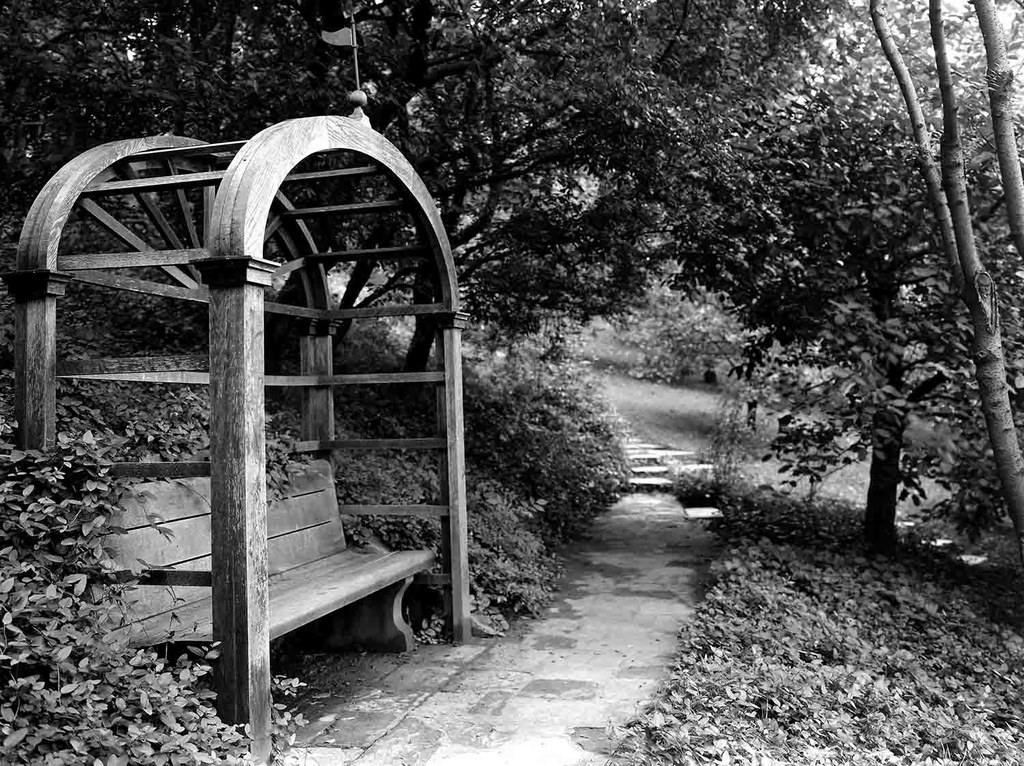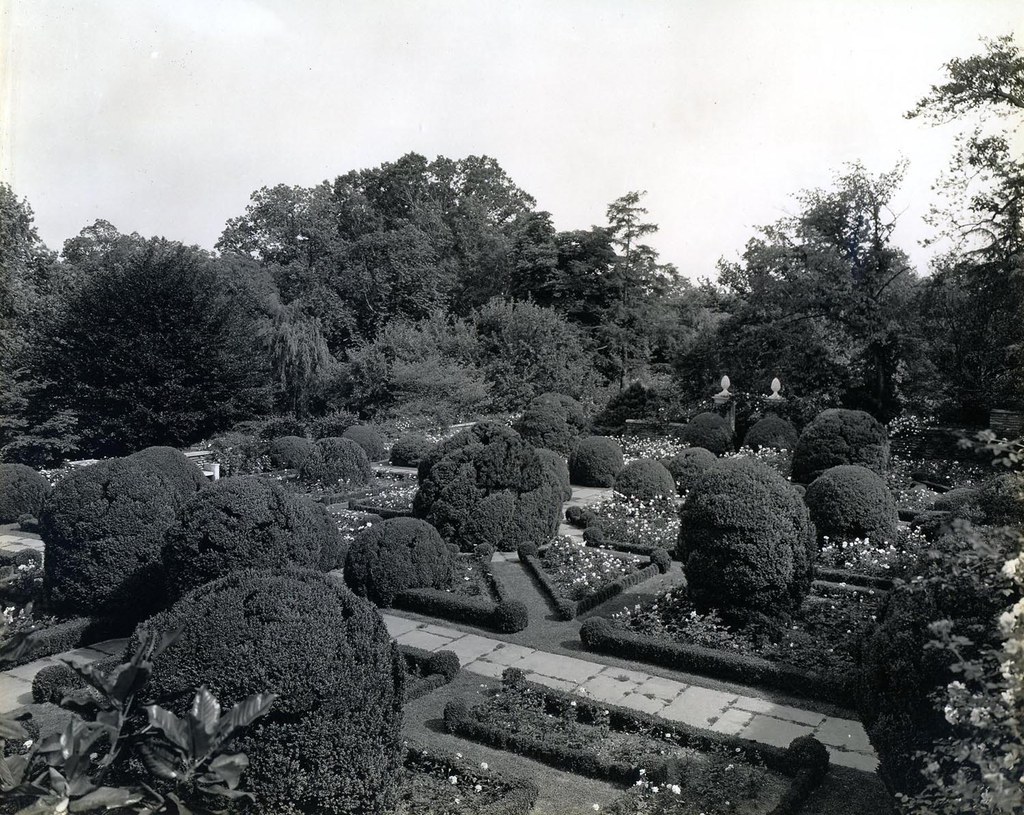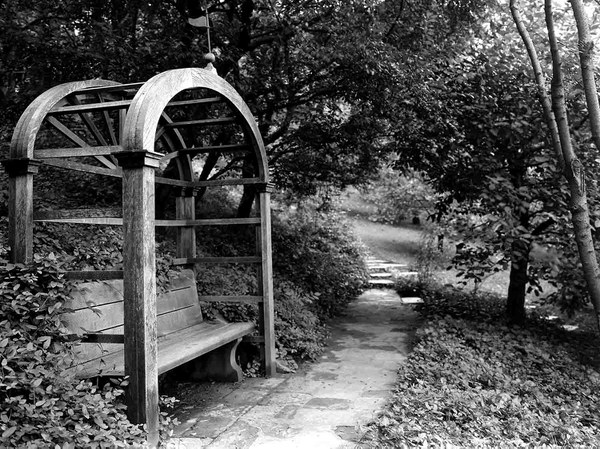By Thaïsa Way
In summer of 1921 Beatrix Farrand met with Mildred Bliss at her new home in Georgetown to discuss the potential of designing a landscape for the country place. Over that summer, with another visit in August when Farrand met with Lawrence Brook, the architect renovating the house, Bliss and Farrand imagined a new landscape and while “walking the steeply sloping land together, . . . discover[ed] a strong aesthetic and emotional camaraderie.” A year later Farrand offered Bliss a written description of their vision, to which Bliss replied, “your letter and its enclosures have made us purr with contentment.”
Summer of 2021 marks the launch of our Garden Centennial exhibitions which both celebrate one hundred years of the beauty and inspiration the gardens and landscape offer and share the significant scholarship on this important work of art. The centennial is a critical moment to pause and appreciate as well as to reassess the landscape and its legacy. It is a moment to look back and forward to the next hundred years. In that light, this April we begin publishing letters monthly from those who have studied and cared for the gardens over the last century, drawing on the excellent scholarship of past archivists, including James Carder and Linda Lott, and sharing new work by historians and our colleagues in the humanities.
After a year of isolation, it may be easier than usual to acknowledge the power of the Dumbarton Oaks gardens and landscape as a gift to the public and a place to find beauty, to bathe in the scents of spring and summer, to find awe in the autumn colors, and to find poetry in every season. But we are also reminded of the fragile nature of this work of art, comprising living elements set in the outdoors. It requires careful and creative stewardship by gardeners, artisans, and museum curators, and by the landscape historians and preservationists who partner with the gardeners to monitor the landscape as a whole. It is a work of art composed of many works of art. As landscape architect Peter Hornbeck has noted so clearly in Beatrix Jones Farrand (1872–1959): Fifty Years of American Landscape Architecture, “landscape and gardens are often actually destroyed by inadvertent maintenance practice, little by little, day by day, until the fateful moment when the realization dawns that the design is disappearing irrevocably, that it has already done so! Gardens can be destroyed by the inappropriate performance of the very activities intended to preserve and enhance them.” Furthermore, we know the gardens and landscape are more than a design and aesthetic composition; they must be cared for as an ecological composition.

Given these challenges, how do we retain and steward the design Farrand and Bliss envisioned and the gardeners—under Farrand’s careful eye—constructed, planted, and tended? An important approach is to reconceptualize the garden and landscape as an archive as well as a work of art. This is true for the broader landscape where Farrand carved the garden rooms and the paths, walks, and views that bring the composition together. For the moment, let’s focus on the gardens, as they let us explore Farrand’s creation as an archive of design, ecology, and horticulture. They also record the significance of gardening, as an archive of the labor and care they require.
What is an archive? Archives generally refer to valuable records, mostly thought of as documents and objects that offer evidence of past events, places, or people. The landscape as archive has been explored by scholars and artists, describing the land as a place where accumulated artifacts are stored. In a designed garden and landscape, we find traces and inscriptions of a particular moment in the design and construction. Equally importantly, we can identify the agents of growth and change in the landscape. In this way gardens are both a historical archive of a particular time but also offer the possibility to think of the archive as always changing with the seasons and the years. This is the challenge for the stewards and for the historians, but it is also what makes the garden-as-archive one of the most exciting areas of scholarship I can imagine as we seek to create a better and healthier planet for the future.
It is likely easiest to imagine the gardens as a design archive because we are most aware of the inscription of Farrand’s design as we walk along her paths, take in her framed views, and marvel at her compositions of plants, stone ornaments, and fountains. A design is found in both the whole and in its components, and the preservation of our gardens and landscape requires taking both into consideration. When we think of the whole, Farrand’s intentions to create particular views and alignments and her deft use of proportion and scale are essential to her design. Equally important are the details: the ornaments and decorations are maintained through constant tending. Even so, these details are in danger of erosion or destruction in a strong storm.
The furniture Farrand designed is a beautiful example of artifacts integral to the landscape and gardens. Many of these pieces have remained in place for almost a century. And yet, eventually, even the best crafted wood furniture ages till it no longer performs as intended. We are privileged to have access to a wonderful craftsman who can recreate Farrand’s furniture detail for detail. We take a similar approach to the wood arbors and steps. The plants require a different method, whether it is annually replacing the tulip bulbs in the perennial beds or replacing roses every couple of decades. The design archive guides the care of the designed whole and each of the elements with a deep appreciation for how these are woven together in this remarkable landscape.

The garden as ecological and horticultural archive forefronts the physical artifacts of the landscape including plants, the water, the soil, and the ever-present natural systems and processes. The land Farrand designed the gardens on is first a geological archive offering evidence of land formation and the power of water and rock to shape landscape. The site, with its ridge, valley, and stream, had been used by Indigenous communities for thousands of years. With the arrival of Europeans most significantly in the eighteenth century, the landscape was the focus of numerous families who sought to create a country home on the outskirts of the nation’s new capital in Washington, DC. These forces of change are all etched into the land.
As the gardeners tend to the original trees Farrand designed the landscape with, they are stewarding artifacts not only of the original design but of the longer history of the site. The topography, with the east-west orientation of the ridge and the deep valley stream, as well as the flow of water itself, shapes the ecology of the site. The oak trees that became the site’s namesake likely grew from earlier forests, as is also likely the case for the tulip poplars. But the katsura tree, the beech trees on the terraces, and the cedars were all planted by those with aspirations for a cultivated country estate. Farrand planted an orchard where there likely had been one before, and cherry trees and crabapples on the hillside. She added a line of silver maples to create Mélisande’s Allée.
Farrand was recognized for her deep horticultural understanding, and we continue to draw on that archival knowledge as we work with her gardens. In some of the garden rooms we plant and tend to her specifications, including the wisteria on Arbor Terrace and the boxwood on Box Walk. In other garden rooms, appropriate replacements enhance her design intentions. On the Fountain Terrace the gardeners adhere to her color scheme using newer hybrids of the tulips in the summer while retaining historic mums in the fall. The garden staff pay close attention to the ecology of each garden room, looking for signs of changing hydrology, new pests or diseases, and the more standard maturation of trees, shrubs, and vines, with an eye to replacing when they can. They also need to think about the challenges of invasive plants such as bamboo and English ivy, both of which are part of Farrand’s original design. This makes the garden a unique archive in that it can’t be simply catalogued and carefully stored away but must be constantly reevaluated, curated, and actively tended to every season, every year, every century.

By understanding the garden as an ecological and horticultural archive, it becomes easier to see it as an archive of the labor of gardening, too. As with any archive, it must be maintained. In a garden that might mean weighing the importance of design intentions, plant choices, and the environmental health of the landscape. These are not easy choices, and the gardeners are always assessing options and monitoring how the archive changes, grows, and matures. We can identify the artifacts of the gardeners and their choices most obviously in the cutting garden and kitchen garden where each year they determine which plants to cultivate. They consider what flowers will do well, balancing the demands for flower arrangements in the museum and for events. They think about the food served in the refectory when they plant the kitchen garden. In this work they draw from Farrand’s design intentions that made the space for gardening as an ever-changing and evolving activity. As is most clear in her notes for the Plant Book for Dumbarton Oaks, Farrand understood gardens could not be frozen in time and her design would be most successful if the appropriate horticultural decisions were made as it matured. As she noted to John Thacher in a 1944 letter, “a garden is not a static object . . . It must be constantly not only weeded and cared for [but] . . . replanted from time to time in order, like the Red Queen in Alice, to stay in one place.”
The garden-as-archive is an essential frame for historians and preservationists. While we use more traditional archives, including the 1,026 drawings Farrand created for her designs, we also study the site in place. We walk the paths, we take in the views, and we find pleasure in the scents of blooms and the songs of birds. This is a critical part of our research, as only in living Farrand’s design can we truly claim to understand her intentions. And every visitor to the garden shares this experience: the more one visits, the more one understands and knows the gardens.
The garden-as-archive is powerful because it forefronts both the complexity of the place and how it contributes to the Home for the Humanities the Blisses envisioned and built. In establishing this remarkable place they wanted people “to remember that Dumbarton Oaks is conceived in a new pattern, where quality and not number shall determine the choice of its scholars; that it is the home of the Humanities, not a mere aggregation of books and objects of art; that the house itself and the gardens have their educational importance and that all are of humanistic value.” If we imagine the gardens and the landscape as a set of nested archives, we understand how much labor, knowledge, and love goes into sustaining the place so that we might have the simple pleasure of enjoying it.
Thaïsa Way is resident program director of Garden and Landscape Studies.

